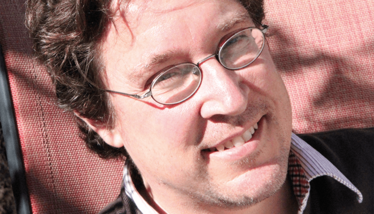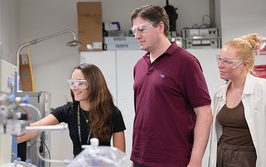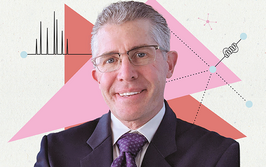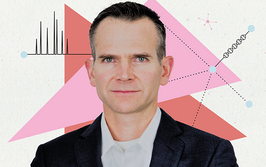Opening Doors With Omics
Sitting Down With… Oliver Fiehn, Director, NIH West Coast Metabolomics Center, Paul K & Ruth Stumpf Endowed Professor in Plant Biochemistry, UC Davis Genome Center, California, USA.
Oliver Fiehn |

What was your route into science?
I was always interested in understanding how things worked; I was curious and serious, and asked a lot of questions – not what you would call an “easygoing” child! In high school, I discovered that I had a passion for chemistry. When I finished my PhD in 1997, I wanted to go into industry, but there was high unemployment in the sciences in Germany at that time – 2,000 graduate chemists for every few hundred industry positions. I got a postdoc position at the Max-Planck Institute in Potsdam and came to find metabolomics particularly fascinating. After a short time, I became group leader. So that was my trajectory – a chain of reactions…
What fascinated you about metabolomics?
On my first day, my boss said, “Don’t ignore the small peaks.” Abundance doesn’t equate to importance; compounds at very low concentrations, such as hormones, can have huge effects – as can high abundance compounds like glucose. That’s the concept of metabolomics – looking at the whole picture, trying to understand what it means and unraveling biological technologies along the way. It is asking an open-ended question, which always leads to new discoveries and opens doors. And it is simply a lot of fun!
How has the field changed in the last 20 years?
In the beginning, we were mainly hunting low-abundance peaks (or peaks in general) and didn’t think that much about quantification, harmonization and standardization. Then, ten years ago, we started the Metabolomics Standards Initiative. Now, we can feed metabolomics data into databases, and compare and contrast findings across studies. Any one study doesn’t tell you the truth; you have to find multiple lines of evidence and compare them in meta-analyses – that’s how you figure out the functions of different compounds. The field has become more serious these days, more established, and – I hope – more useful for clinical and biomedical research.
Could you give an example of the modern approach?
My group found diacetylspermine – an acetylated version of spermine – in blood for the first time ever, and discovered that it is indicative of people who will get lung cancer within the next six months. We carried out two independent clinical trials, each with 300 people, and found very high significance. Of course it needs to be replicated in further cohorts, but it was an important finding.
Another significant discovery was the so-called FAHFA lipids, by Barbara Khan at Harvard. This is a new class of compounds that influences and directs insulin sensitivity and insulin resistance, so is important in metabolic syndrome, and in the development and progression of diabetes. Again, more research needs to be done – that’s the case with all scientific discoveries; after the initial excitement, you need to dig deeper.
You manage a big group…
I am director of the West Coast Metabolomics Center, a consortium of different laboratories at UC Davis. I directly manage two of those labs; one is my own research lab, where we work with postdocs, visiting and project scientists, PhD students and cheminformatics specialists. The second is a service laboratory, with 13 full-time staff who manage the 17 mass spectrometers, and process over 25,000 samples a year, for more than 400 studies. These are two different entities, but both are important. I would never call the service lab team technicians; they are scientists, dedicated to pursuing analytical chemistry in a rigorous manner, and ultimately trying to help people. It is a shame that it’s so hard to publish method validation work in analytical journals – they only want new methods, not robust ones, which is strange to me. Analytical chemistry methods have to be proven and validated to be robust.
How does working as a scientist in California compare to Germany?
The culture is more “thriving” here; it is more vibrant, open-minded and energetic. We have absolutely fantastic scientists at Davis, and I love working here – it’s fabulous.
What is your biggest source of inspiration?
I am a member of the Molecular and Cellular Biology Department, and my lab is located in the Genome Center, so I am surrounded by biologists. I’m also member of the Comprehensive Cancer Center in Davis. It means my inspiration comes from actual biological and medical questions. For example, we recently received a grant from Columbia University to research chronic fatigue syndrome. I think if we take analytical chemistry seriously, we can really have an impact on people’s lives. That’s what drives me.
What are you most thankful for in your career?
My freedom. I can follow my own ideas – I’m my own boss, and I can pursue my vision and favorite topics in metabolomics. It’s the best job in the world – and I’m very grateful to society for allowing me to do it.
Director, NIH West Coast Metabolomics Center, Paul K & Ruth Stumpf Endowed Professor in Plant Biochemistry, UC Davis Genome Center, California, USA.

















